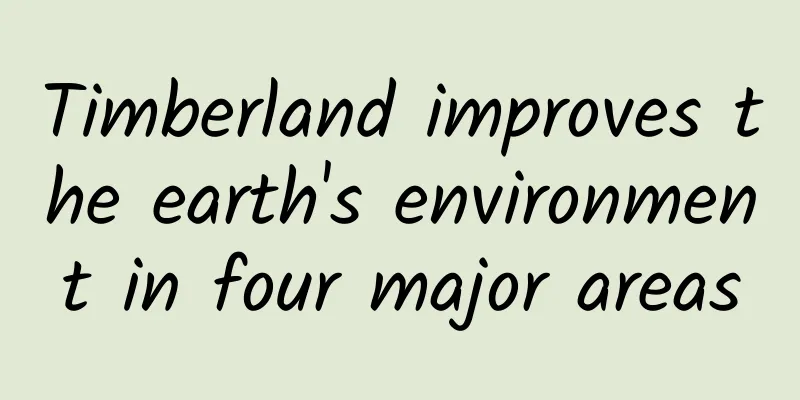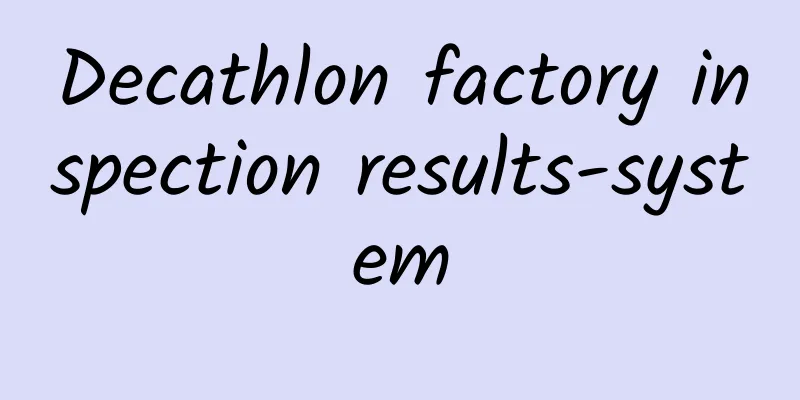Timberland improves the earth's environment in four major areas

|
At Timberland, we strive to reduce our impact on the environment in various ways - from store construction, product packaging and design, to the selection of raw materials. We also actively study and improve processes and behaviors that hinder our environmental efficiency. As a brand company passionate about the outdoors, we believe that doing our best to improve the environment is at the core of our business operations. Through the company's environmental protection program, we are actively responding to these challenges and minimizing our impact on the environment. Energy: Achieving Carbon Neutrality Global warming has a huge and far-reaching impact on the world and poses an imminent threat to the environment. We are committed to working to neutralize carbon threatening emissions. Timberland's greenhouse gas emissions come from offices, retail stores, manufacturing plants and distribution centers, as well as employee travel. Timberland's goal is to achieve carbon neutrality - which means completely reducing and offsetting the impact of greenhouse gas emissions from Timberland owned and operated factories. To achieve this goal, we have taken the following core measures: Timberland uses renewable energy (solar, wind, hydro) at its facilities, including its factory in the Dominican Republic, its distribution center in Enschede, the Netherlands, and its distribution center in Ontario, California. For example, we installed a state-of-the-art 400-kilowatt solar panel system at our distribution center in California. This system ranks among the top 50 in the world and can meet 60% of the distribution center's electricity needs while reducing greenhouse gas emissions by 480,000 pounds (about 218 tons). Improve lighting design and optimize the lighting system of Timberland locations to improve efficiency. For example, by installing a new lighting system, the electricity consumption of distribution centers in the United States has been reduced by approximately 40%. We offer a $3,000 cash bonus to employees who purchase a hybrid car to encourage them to change their behavior. Hybrid cars have lower fuel consumption and lower exhaust emissions than regular cars. We also hold a "Bike to Work Day" event to encourage employees to ride bicycles to work, thereby reducing their carbon emissions. Voluntary purchase of "T-REC" - "Trading Renewable Energy Credits". Renewable energy credits are also called "green labels" and their amount is used to finance the production of renewable energy. We use credits to offset emissions of gases that we cannot eliminate ourselves. Natural resources: Increase the use of organic and recycled materials For Timberland, improving the environment means creating and growing markets for sustainable resources. From products to packaging to stores, we use recycled and organic materials that consume less energy and contain fewer chemicals. Here are a few examples: Since 2003, we have used organic cotton in our apparel products - cotton grown without the use of harmful pesticides and herbicides. In 2006, 6% of the cotton we used came from organic farms. Timberland has always implemented green principles in the design concept of retail stores. The recycled and renewable materials we currently use include: floors and panels produced from recycled wood boards, in-store furniture made from recycled wood, etc. Even the paints and floor paints we use meet the green building standards of low volatile organic compound content. Now, we are applying for LEED green building certification for the new retail store design. We have adopted a completely new approach to product packaging and labeling, a first for the retail industry. This includes shoe boxes made from 100% post-consumer recycled fiber, soy-based inks and water-based glues. Most importantly, to help consumers understand the products they buy, our shoe boxes are labeled with "nutrition labels" that indicate where they were made, how they were made, and their environmental impact. In the spring of 2007, Timberland took the original intention of using nutrition labels a step further and introduced the concept of "Green Index". The "Green Index" indicates the level of environmental impact of the materials of a specific product. We mainly measure and report in the following three main areas: Climate Impact: Measures greenhouse gas emissions from the extraction of raw materials through the manufacturing process Chemicals Used: Measures hazardous substances (solvents and PVC) used in the production of the product Materials Used: Measures the use of organic, recycled and renewable materials In the Green Index, the lower the rating, the less impact the environment has. Zero (0) indicates minimal environmental impact, while ten (10) means there is still work to be done. The Green Index is currently applied to select Timberland Outdoor Performance products and, since 2008, has also covered GoLite and Mion brand footwear. Strategic Partnerships We don’t fight alone in the environmental protection field. We often work with organizations that share our values to amplify the impact of our efforts. These partnerships often bring us exciting opportunities and strengthen our determination to strive for greater progress. Clean Air Cool Planet In 2001, Timberland formed a partnership with the Clean Air Partnership (CA-CP), a non-profit organization dedicated to addressing climate change. The cooperation includes jointly implementing a greenhouse gas emission inventory, setting emission reduction targets, and promoting effective measures to suppliers, employees and customers to improve behaviors that affect the climate for economic benefits. The cooperation with CA-CP provides Timberland with a larger platform, allowing us to reach more energy and environmental protection professionals, and helping us reduce our impact on the environment - especially reducing our carbon footprint. Organic Exchange The Organic Exchange is an organization that helps connect all organizations in the organic cotton value chain and jointly remove barriers to industry development. The organization brings together farmers, companies, governments and regulators, and non-governmental organizations to promote the growth of organic cotton supply and demand, and to establish the necessary networks, new business models, processes and metrics for the growth of the organic cotton industry. Within 10 years, the organization's goal is to make organic cotton account for 10% of the industry's overall supply and demand. The Climate Group The Climate Group is a non-profit international organization whose mission is to enhance the leadership of companies and governments in addressing climate change. The organization places particular emphasis on close cross-industry collaboration, with partners including companies such as Timberland that strive to enhance industry leadership while developing and implementing low-carbon economic development plans. Chemicals: Reducing Chemicals in Products and Factories The footwear and apparel industry faces a constant challenge: ensuring our products are free of harmful chemicals. The answer to this challenge depends on rapidly evolving science and technology. Timberland is committed to promoting the use of sustainable alternatives throughout the value chain, from product design to factory manufacturing and supplier selection. Our approach to reducing harmful chemicals in our products and the environment includes: Voluntarily remove PVC (polyvinyl chloride) from products. PVC is a type of plastic commonly used in the manufacturing industry - unfortunately, it is harmful to both human and environmental health. Increase the use of water-based adhesives, which are more environmentally friendly and easier to use than solvent-based adhesives. Enforce restricted substances programs for factories and suppliers. Share information with other footwear and apparel companies to share best practices on restricted substances and increase demand for non-hazardous alternatives that help protect human and environmental health. |
<<: Ann Taylor and Urban Outfitters fell; Goldman Sachs downgraded the two companies
>>: Timberland Timberland factory inspection standard audit
Recommend
HiggFEM 2021 Annual Report
Today we are going to talk about the HiggFEM 2021...
Three reasons why Walmart may only get an orange light during factory inspections
Since Walmart implemented the new certification st...
What is Meltwater? What can Meltwater do?
Meltwater can provide comprehensive media monitor...
WRAP Certification 12 Basic Principles
The WRAP production principles are for factories ...
What is OCS certification? Development trend of organic content standards
Recently, the American non-profit organization Te...
What is Seller Growth VAT like? What are the core services of Seller Growth VAT?
Seller Growth VAT (affiliated to Shenzhen Qianhai...
What is the registration process for eBay Global Sites? What sites are there?
What is the registration process for eBay Global ...
Warning signs required for BSCI factory inspection - containers for storing chemical substances
Warning signs required for BSCI factory audit: ch...
Common fire safety issues and solutions for BSCI factory audits (VIII) No signs at emergency exits and doors opening inwards
Problem phenomenon: There is no indication of the...
What is Oceanpayment? What services does Oceanpayment provide?
What is Oceanpayment? Oceanpayment/Qianhai was es...
HACCP system certification and its application criteria (Part 3)
HACCP system certification and its application cr...
How is Shida International Logistics? What should I pay attention to when receiving goods from Shida International Logistics?
How about Shida International Logistics? Shida In...
What is Tanga? What do I need to sell products on Tanga?
Tanga is a well-known American e-commerce platfor...
Facebook registration process analysis ~
Facebook Profile: Facebook (Chinese translation: ...
How is Haohang Yuntong International Freight Forwarding? What services does Haohang Yuntong International Freight Forwarding provide?
How about Haohang Yuntong International Freight F...









